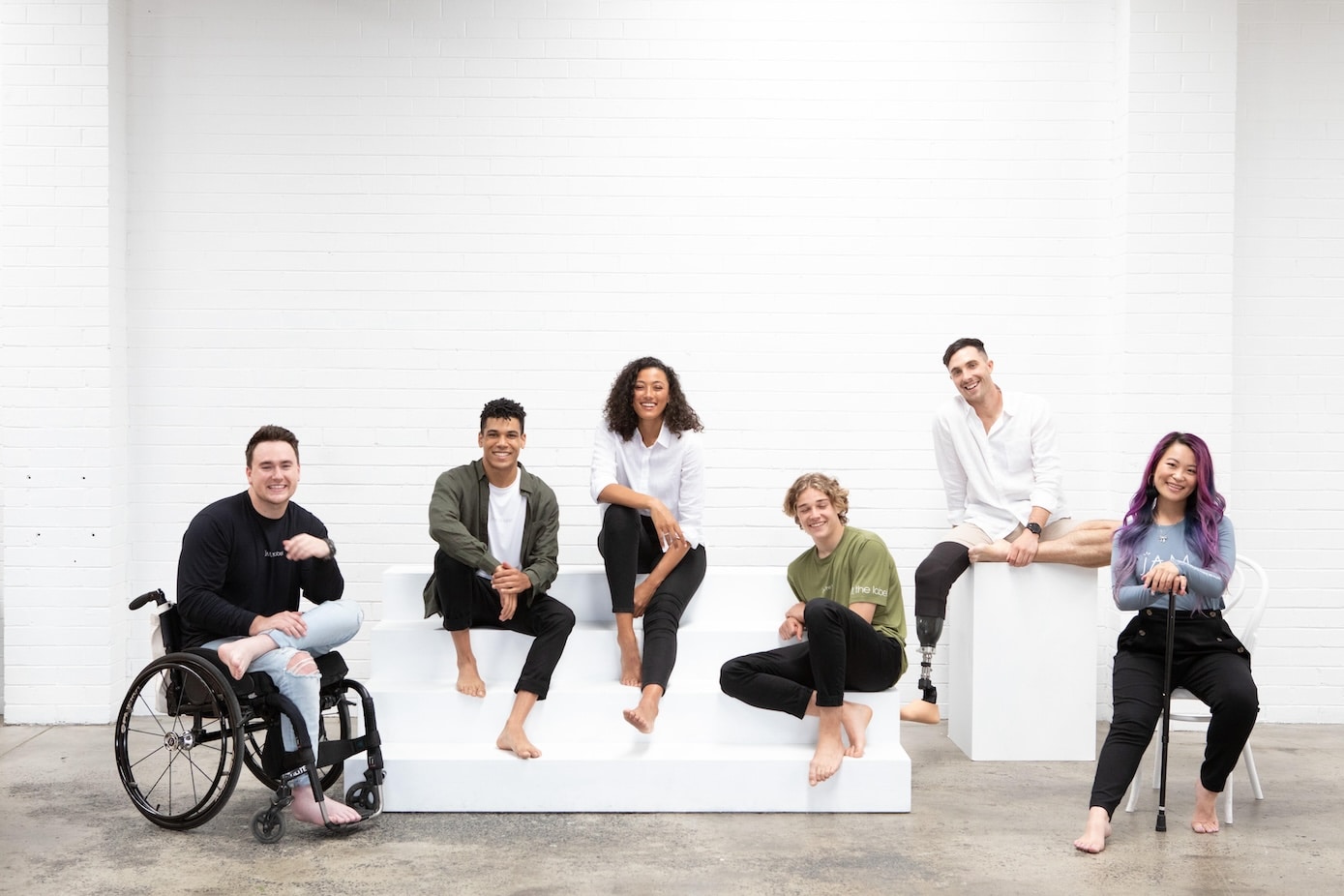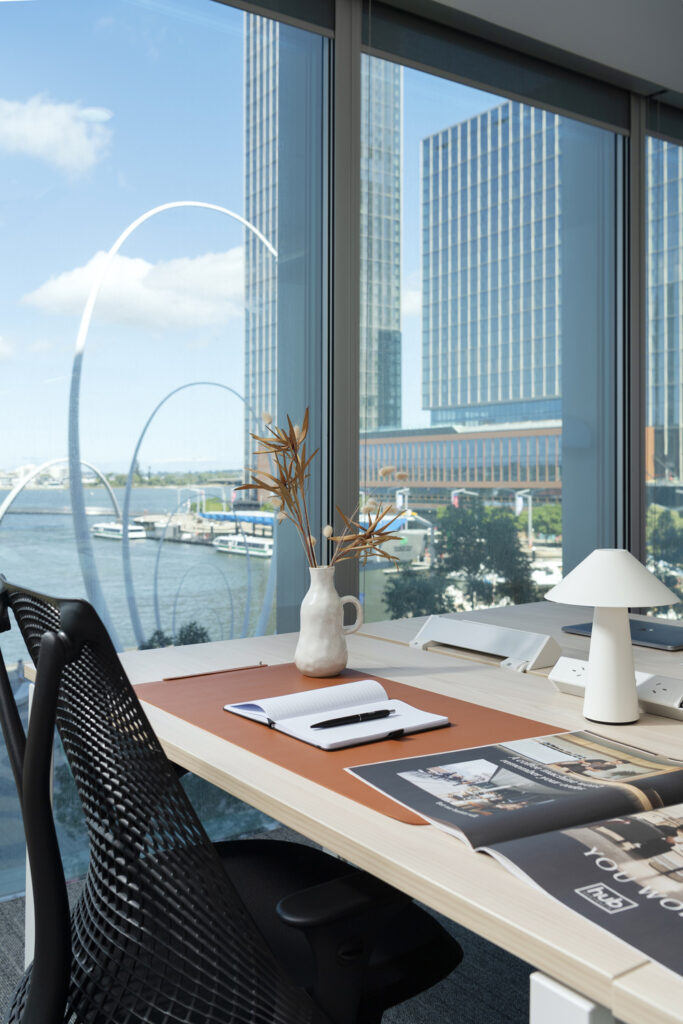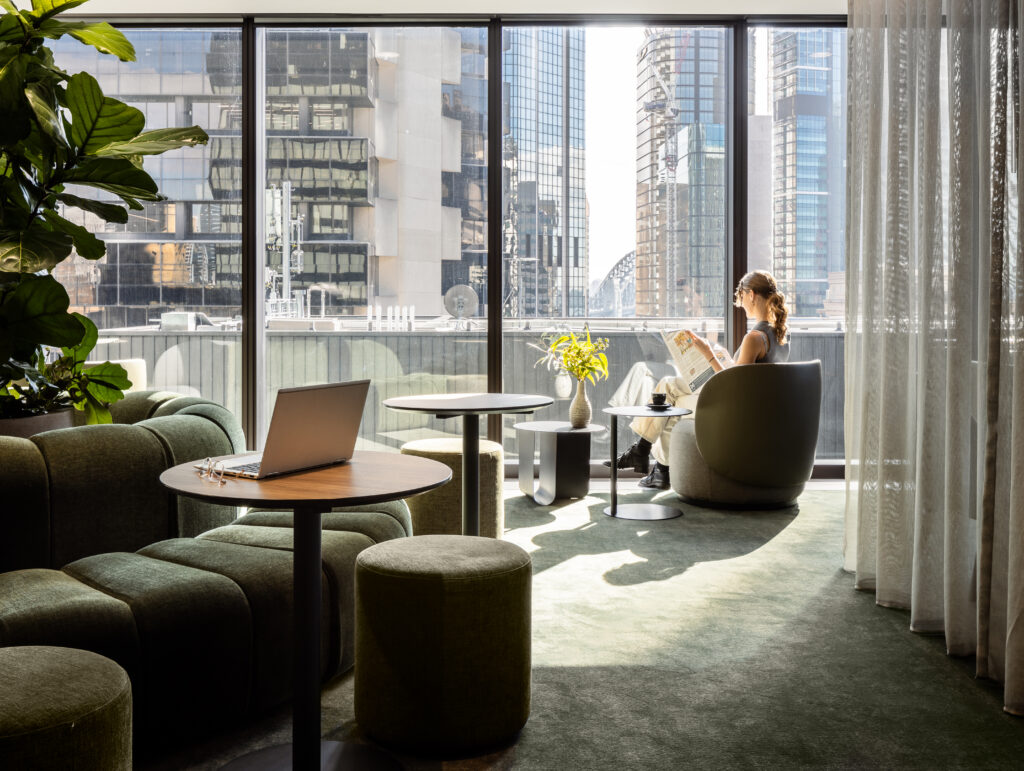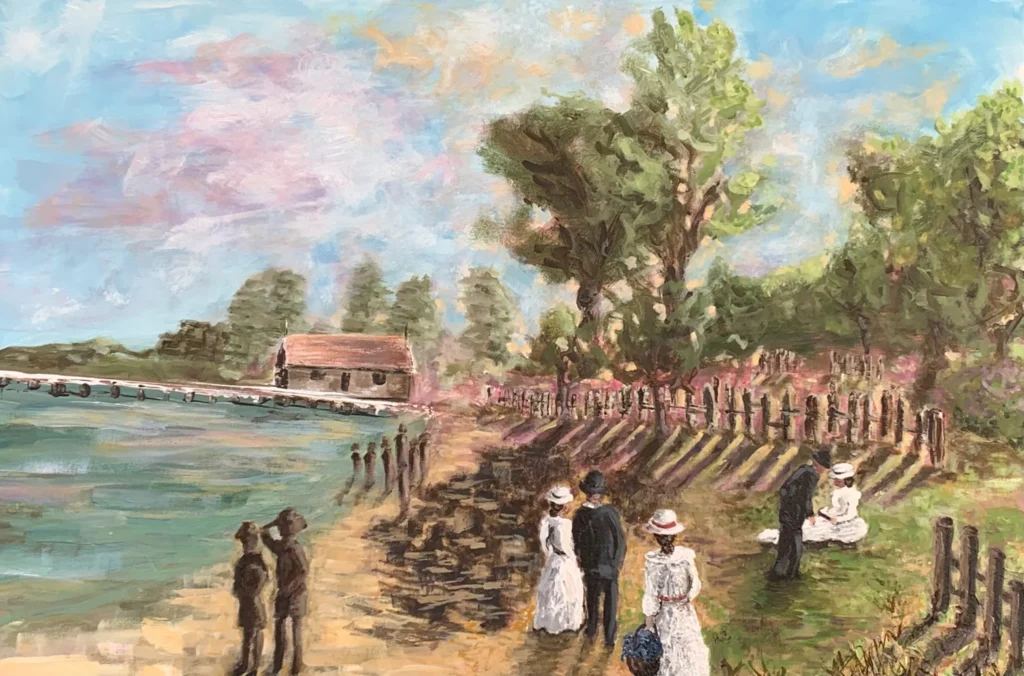For most of us, getting dressed requires very little thought and effort. But for people with disability, it can sometimes be time-consuming and challenging. Or even painful and degrading.
And that’s what JAM, an inclusive clothing brand designed with people with disability in mind, aims to change.
Emma Clegg, co-founder of JAM, is one of our 2023 Flexi Impact members based in Hub Church Street. In this article, she tells us more about how JAM came about – and why it’s time for the fashion world to take people with disability seriously.
Making fashion functional
Emma Clegg met her friend – now business partner – Molly Rogers at university, while they were both studying to become occupational therapists. And they quickly realised that wasn’t their only common ground.
“At that time, we were both also working as disability support workers,” Emma recalls. “We both worked with mostly young people with disability, and the two people we saw on a weekly basis were Jack and Maddie.”
Jack and Maddie both have cerebral palsy and are full-time wheelchair users, so they rely on others to get dressed each day. And when Emma and Molly got together to talk about their shifts, they found that they were facing the same problem.
“We were talking about how we really wanted to be doing all these fun activities with Jack and Maddie,” Emma explains. “But dressing was a difficult task that took up so much time from our shifts.
“So we wondered, why are there no clothing out there that Jack and Maddie could wear that is functional, easy to put on – but also funky and age-appropriate? Why must they choose between fashion and function?”
Emma and Molly started looking around, but the options weren’t great. The clothes they found were either targeted towards the elderly and highly medicalised – or were extremely specialised one-off pieces that cost a fortune.
“There was nothing more mainstream or catered to the young adult population,” she says. “Nothing in the Australian market that we could recommend to Jack and Maddie.”
So that sparked the idea for adaptive clothing. And JAM the label, named after Jack and Maddie, was born in 2019.
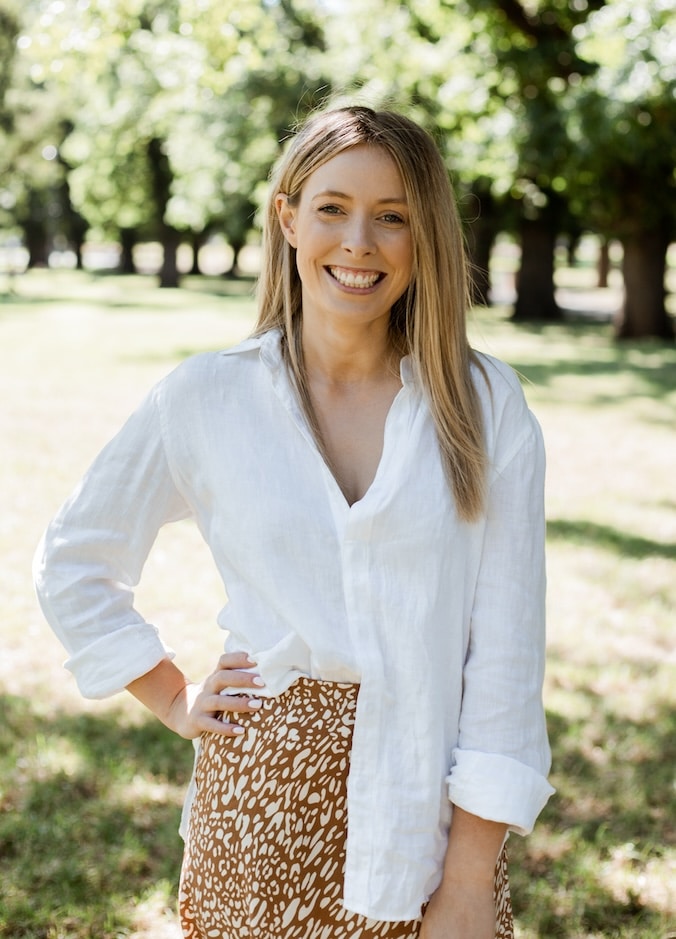
Emma Clegg, co-founder of JAM
Small tweaks, big difference
For the majority of us, putting on clothes is an effortless endeavour that we take for granted. Emma gives us an example of the struggles Jack and Maddie face.
“Imagine trying to put on or take off a jacket while you were strapped up in your car seat,” Emma says. “It’s almost impossible, right? But that was the reality for Jack and Maddie.”
She adds that Jack and Maddie have a lot of supports and straps on their wheelchairs and on them. Which makes simple things like putting on or taking off a jacket while out on a walk tricky.
“For one, it was time consuming. It would take us, say, 10 minutes to try and get a jacket on them. But it was also really degrading because we’d end up having to put a hoodie on backwards with the hood hanging down the front – or put a blanket over them.
“And we just kept thinking, well, we don’t walk around with our hoods hanging down the front or wearing a blanket. So why should they?”
Another common pain point? The irritation of tags.
“No one likes tags, really,” Emma says. “And for people with sensory needs, tags and seams can be really frustrating.”
But for some others, especially if they have limited mobility and limited communication like Jack and Maddie, it becomes even more challenging.
“If a tag was annoying them, they’re not able to just rearrange their clothes to be more comfortable,” Emma points out. “And they also can’t communicate with us and say, ‘Hey, this tag is really pissing me off.’
“That’s why at JAM, we don’t have any tags on our products. We use only printed-on labels to completely reduce the chance of that irritation.”
As an inclusive label, JAM is always looking for ways to make it easier for people with disability to get dressed or wear the clothes more comfortably. And sometimes, all it takes are simple design adaptations and features.
Collaborating with the community
JAM is incredibly passionate about the inclusion of people with disability and making their business accessible in every aspect. And one of the ways they do that is by constantly collaborating with the community.
“We have a suggestions page on our website that we promote, for people with lived experience to use that to send us suggestions or pain points that they’re experiencing,” Emma says. “And we also hold a lot of interactions and information sessions with occupational therapists and disability support workers.”
That, according to Emma, is their informal collaboration.
Formally, they have a design consultation committee, where a group of people with varied lived experience contribute their thoughts and ideas.
“We get about 10 to 15 people – including people with disability, therapists, carers – all with very different experiences of disability and dressing,” Emma says. “And we pay them for their time to participate in our in depth market research. And they share about their experience of clothing and what they’d like to see from us, to help us continue to make meaningful products.”
Emma is also looking forward to working with more designers with lived experience as they expand their collections.
“For our Essentials Collection, which is made of wardrobe staples, we designed that in consultation with the community,” she explains. “So, lots of customer feedback and lots of sampling and discussions with Jack and Maddie and their families.
“Then for our first Capsule Collection, we wanted to do something more fashion-forward and focused on trends. So we worked with Rachel Shugg, who was a junior fashion designer with disability.
“It was really important to us that not only were we working with someone with lived experience, but that we were also supporting the employment of people with disability wherever possible. And we’re definitely going to continue to collaborate with fashion designers with lived experience within the sector.”
Why fashion is not frivolous
JAM is here to make the fashion industry more inclusive for the 20% of Australians who are people with disability. And they particularly want to give young people with disability the opportunity to express themselves through fashion.
But through her business journey, Emma has met her fair share of people who were quick to question their focus on fashion.
“We hear this all the time,” she says. “People saying ‘Oh I don’t care about fashion’ or ‘I’m not into that kind of stuff’. But we tell them it’s not necessarily the clothes itself. It’s how the clothes make you feel and how that can impact every part of your life.”
She elaborates, “So many studies have shown the psychological impact of fashion. It’s not necessarily about the trends or what’s popular at the moment. It’s about how fashion can influence our confidence, our motivation, our ability to engage socially.”
And at the heart of JAM, it’s the passion to change the face of fashion for people with disability.
“People with disability shouldn’t only have to wear trackies or leggings every day because that’s the only thing that’s accessible or easy for them to wear,” she says.
“From the start, our mission is to be the leaders of inclusive fashion in Australia. To really show the mainstream fashion industry that people with disability are such a big part of the market. And that they should be considering those with disability within their designs – not just in their marketing materials.
“We want to be the lead example of that. To show how to do it authentically, and how to collaborate with the community to do that.
“We want people to be able to think of adaptive clothing like they do maternity wear. To know what it is and have that expectation that a person with disability should have as many options and choices with their fashion as someone without disability.”
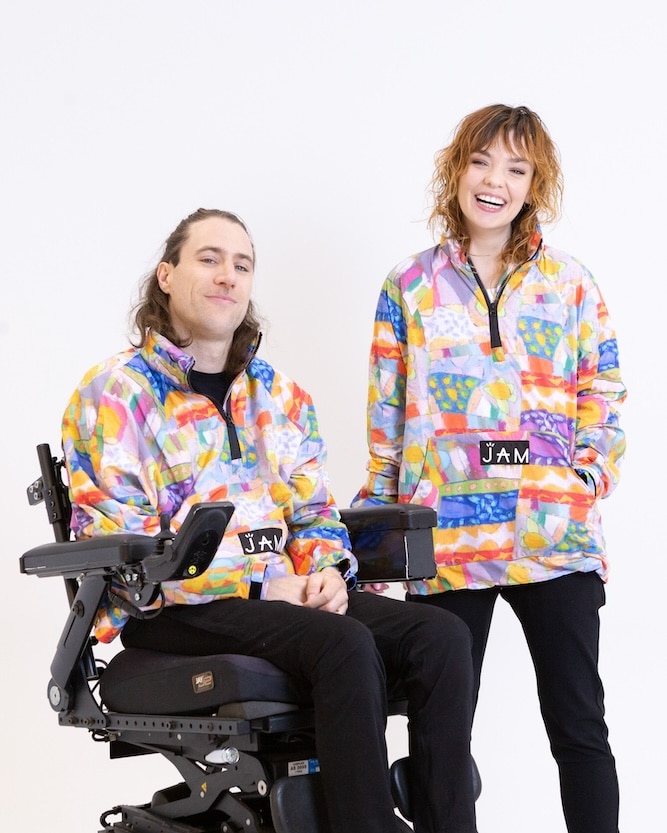
Models in JAM’s Digby Jackets
The wins that keep JAM going
When asked about some of the biggest highlights of their business journey, Emma says: “Being the first adaptive runway at the Australian Fashion Week in 2022.”
It was a huge production, and the JAM team were excited to see all their hard work come to fruition. But beyond that, the biggest win was seeing the impact that the show had on the disability community.
“We received so many messages and comments afterwards,” Emma shares. “Of people telling us they’ve never seen not only themselves represented on a runway, but designs that considered their dressing needs and lifestyle.”
To Emma, nothing brings as much fulfilment as knowing the impact they are making through their products – and through their business existing.
“We get a lot of emails and reviews from customers and from people that are providing assistance to loved ones with dressing. And they often tell us how our products have completely changed their days. Like, they feel so much more confident now, or it’s so much more dignified.
“And hearing that individual feedback is what really motivates us to keep going through challenging times. They remind us that we’re making a difference. That we’re doing the right thing.
“And I feel so fortunate that we’re able to do this business, to create things that fulfil a real need.”
On her experience as a Hub Flexi Impact member, Emma says it’s everything she expected – and more:
“I applied for Hub’s Flexi Impact membership because Molly was going on maternity leave and I knew I wouldn’t be motivated to work by myself from home. So I really wanted to access a coworking space like Hub. Plus I live just around the corner from Hub Church Street, so it’s very conveniently located for me.
“I also thought all the amenities were amazing, and I wanted to get into the community and have more social interactions than I would if I was by myself at home.
“Since joining, it’s been all I expected and more. I was fortunate enough to be asked to be on the Hub panel for the International Women’s Day event earlier this year, and I met a lot of people through that, which was a really great opportunity. I’ve also done a lot of the free activities that Hub has organised, like the sound healing session and food outings. Which, again, has been really good for socialising.
“I’ve also loved using the facilities, like the workout room. And you know, just being able to come into a space that is so calming yet so productive – that has been really good for me.”
Explore JAM’s website to learn more about their business and collections.
Are you a purpose-driven business like JAM? You may be able to get free access to Hub’s workspace for one whole year through our Flexi Impact program.
